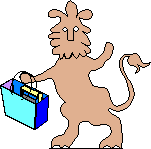 Rare Book School
Rare Book School
Book Illustration to 1890
Terry Belanger
Dress at RBS is casual. In this course it is particularly casual: bring some old clothes! We'll be having several afternoon lab sessions in which we'll be working with printing ink and etching ground, neither of which is particularly removable from clothing.
Before coming to class, please read (and, preferably, reread) all of:
Gascoigne, Bamber. How to identify prints; a complete guide to manual and mechanical processes from woodcut to ink jet (London [and NY]: Thames and Hudson, 1986; later reprints, including a recent one).
Gascoigne is both comprehensive and excellent. It costs $50, and it's worth it. (Various mail-order discount houses [eg Hamilton] occasionally sell copies for $35.) Many museum bookshops carry copies of the book, and in any event it should be relatively easy to get via interlibrary loan. Don't bother to bring a copy with you to Charlottesville, though: there are 13 copies of the book in the BAP reference collection, more than enough for one apiece during class.
I'll be referring constantly to Gascoigne in class, and you will get a lot less out of this course if you have failed to look seriously at the book before coming to Charlottesville.
There is always a waiting list for this course. If you find that you do not have time to read Gascoigne before coming to Charlottesville, please withdraw from the course or postpone attending it until another time in order to make way for someone who is able to complete the advance reading.
You may also want to take a good look at an excellent general history of prints and printmaking:
Mayor, A Hyatt. Prints & people: a social history of printed pictures (New York 1971, repr 1972; pb reprinted Princeton 1980, &c.).
Mayor is very long and exhausting to read in one gulp; but it's an admirable text from which to acquire a broad overview both of prints in books and of separately published prints.